Student Blog

DIY This Holiday Season ⟩
December 7, 2016, by Kimmy
One of my favorite occupations is holiday shopping, but so is crafting! A homemade present shows loved ones you really care and may even lead to a flow state for you. Not to mention, OT has its roots in the Arts and Crafts movement. In the coming weeks, embrace your inner Mary Reilly and use your hands to create Santa’s little workshop in your own living room to deliver the ultimate dose of holiday cheer
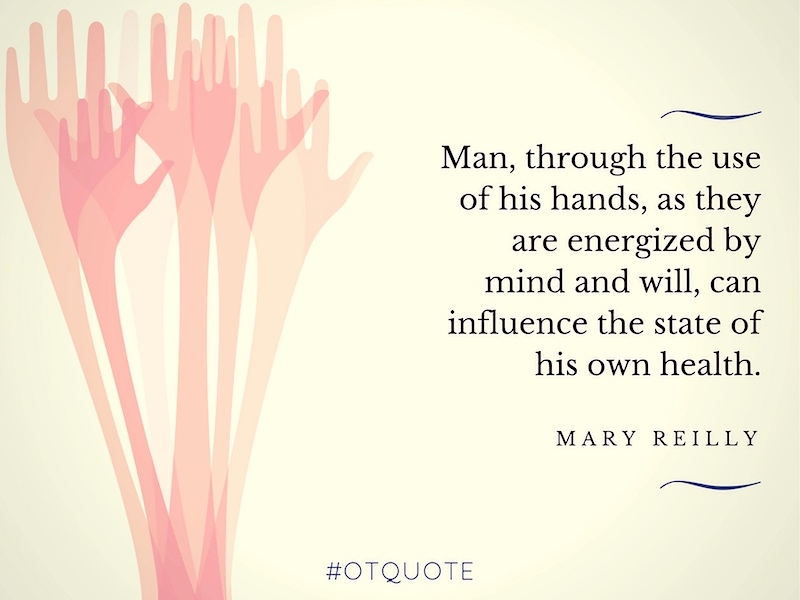
Here are some of my favorite crafts to get you in the spirit:
- Tie blankets will keep you warm and you can use for favorite holiday-themed fabric.
- Stress balls & heat packs are the perfect stressbusters to relax after finals week. Give them to your friends and family to help them stay calm all year, too!
- These peppermint candles will engage all your senses in the holiday spirit.
- Ornaments can be made with materials as easy as an old light bulb and leftover glitter. Or make these mini snowmen using tea lights.
- Reindeer cookies & Santa hat brownies can sweeten up any holiday party.
- A photo wreath is the perfect decoration to commemorate all the good times as the year comes to a close.

For even more holiday fun, try crafting with friends and family. After all, spending the holidays together is the greatest and easiest do-it-yourself present!
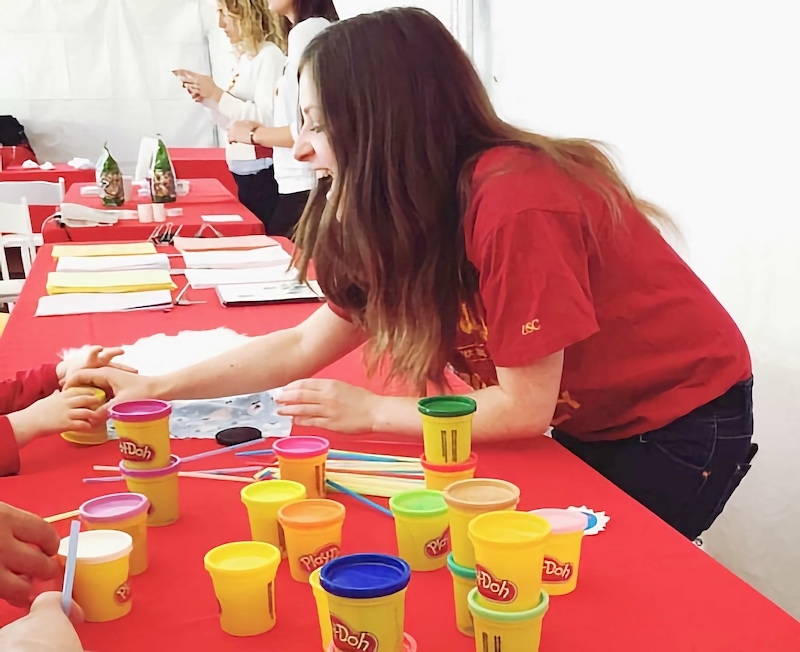
⋯
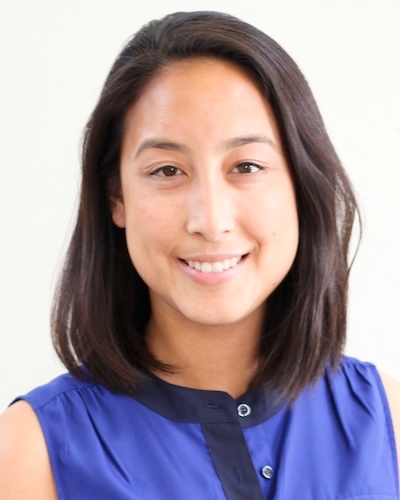
Cohort Love ⟩
December 6, 2016, by Jessica
Admissions Community School/Life Balance
Prospective students are often nervous about the fact that USC’s program is relatively larger than other OT programs. Each class has about 120-130 students, so students might be worried about getting “lost in the shuffle.” However the great thing about the program is that students are divided into three cohorts, with about 40-45 students in each one. Your cohort is the group of people you’ll be taking most of your classes with, so class sizes remain more intimate. For lab sections, your cohort is divided in half, so there will only be 20-25 students in each lab, so you can get more hands on experience.
You’ll become pretty close with your cohort, since you take most of your classes with one another. Some cohorts will plan outings together and share resources with one another. Some of the fun things we’ve done as a cohort: go out to dinner, happy hour, hiking, attend a Dodgers game, and celebrate the holidays with a white elephant party!
This past week was our last class together as a cohort. For our last semester, we will all be taking elective courses of our choosing, so everyone will be split up into different classes. In rememberance of my awesome cohort, here are some photos of Cohort A!
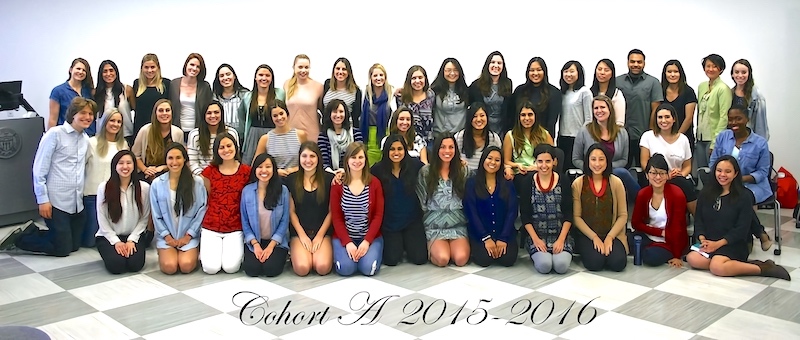
Our first year together
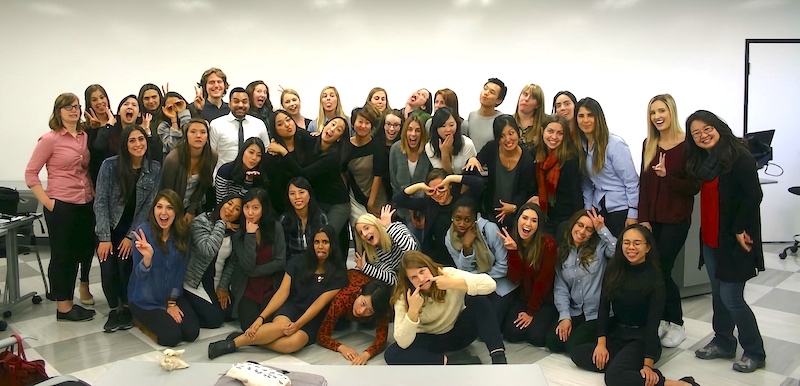
Our last class together
⋯

Cooking From All Woks of Life ⟩
December 5, 2016, by Erwin
For my last lab in the adult rehabilitation course, my classmates and I had the opportunity to cook using adaptive equipment. Not only was this lab delicious, but it was also educational!
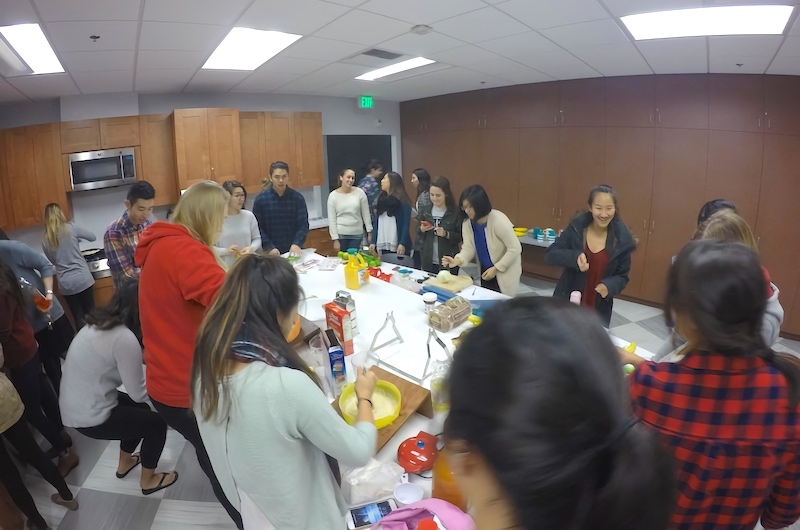
USC OT students getting ready to cook!
Sometimes, individuals can have difficulty completing cooking and feeding tasks after an injury. However, this does not mean they are not capable of cooking or feeding. Adaptive equipment gives individuals the opportunity to cook and feed independently.
In this picture, my classmates, Vanessa and Jamie, are using a rocker knife to cut mushrooms. Rocker knifes are especially effective for individuals that only have use of one arm. Rocker knifes use a rocking motion instead of a back-and-forth motion so that they are able to cut with one hand!
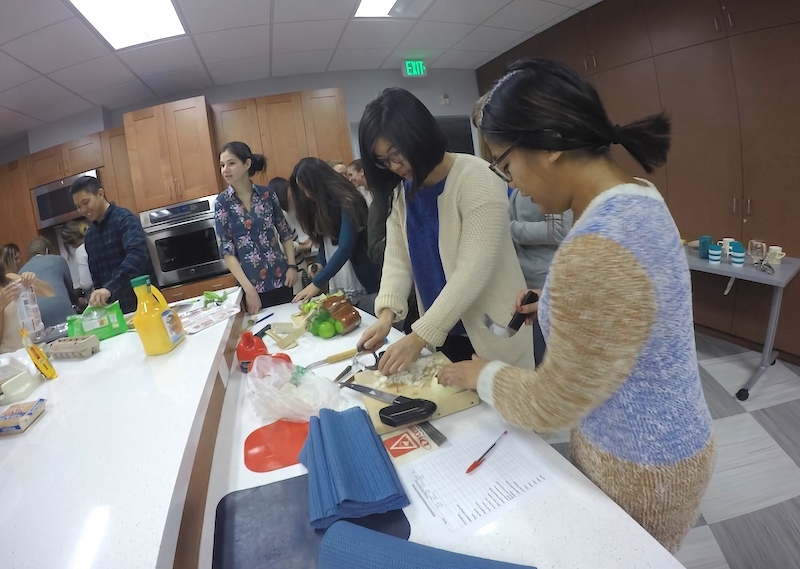
Students using a rocker knife!
In this picture, my classmates Shannon, Annie, and Amy are stirring pancake batter in a bowl holder. This device anchors the bowl so that someone with limited strength, in-coordination, or is only able to use one arm can meal prep in a bowl!
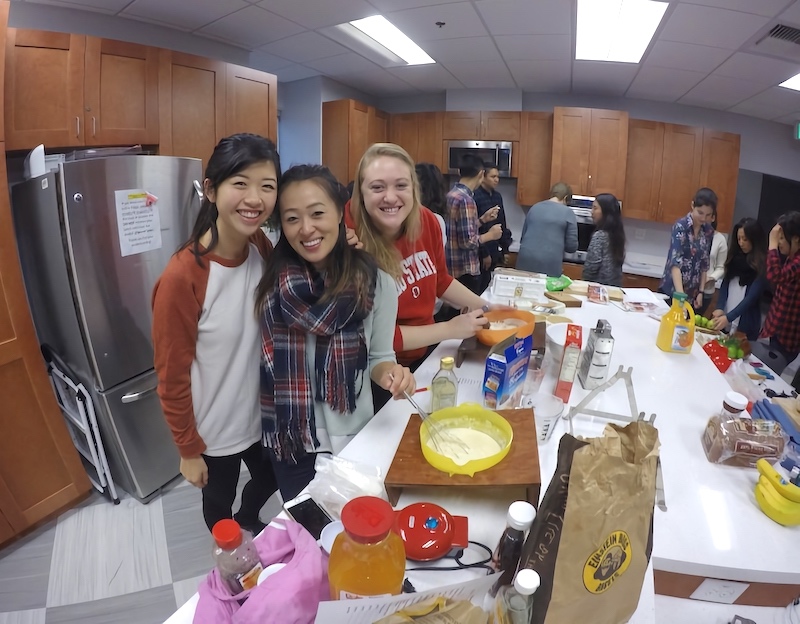
Students getting ready to make pancakes!
Even little things you may not notice can help individuals with a disability cook or feed. Our white countertops are not only stylish, but also have a purpose. People with low vision can have difficulty detecting items; so having a surface that provides high contrast and no patterns is helpful. Even the height of the counter is important. Having a counter that is at waist level is useful for people that use a wheelchair so they can work at an appropriate height.
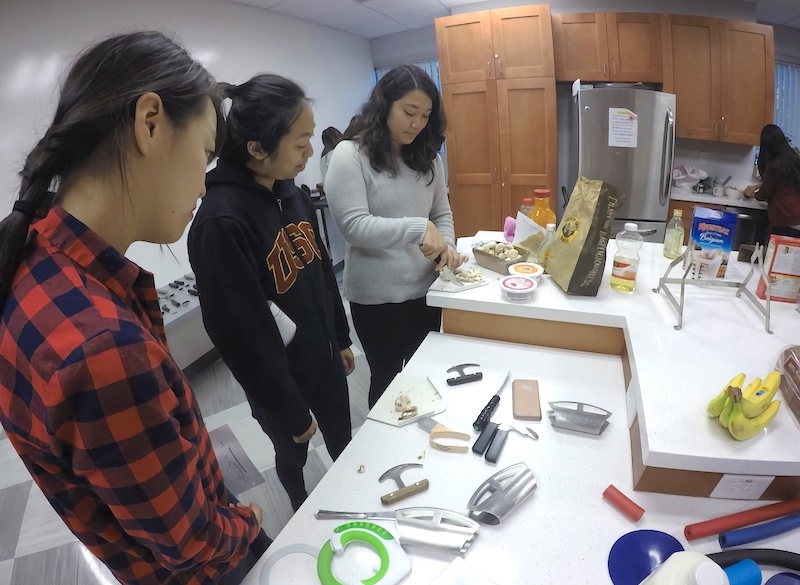
Showing off our universal design kitchen!
All of these devices and modifications are just the tip of the iceberg. Having a disability does not mean you cannot do something, and as occupational therapists, we should support independence for our clients!

Bon Appetit!
⋯

The Community Matters! ⟩
December 5, 2016, by Alyssa
Classes Community What are OS/OT?
Currently, I am taking OT 537: Occupation-Centered Programs for the Community! Specifically, this class is about finding a need within the community and developing a program to address it. With this purpose, you become familiar with the process of planning and evaluating a program, proposal writing, and addressing a prevalent health need. With an understanding and love for meaningful occupation, what better way to apply this knowledge and passion than to build and cultivate a program design! My classmate, Lauren, and I both have a strong interest in health promotion and wellness!
With this interest, we decided to research and develop a program within the workplace to address busy professionals with or at risk for developing hypertension. Our purpose was to educate and collaborate with this population in how to self-manage their health needs, incorporate healthy lifestyle habits into their daily routines, and engage in purposeful, occupation-based activities.
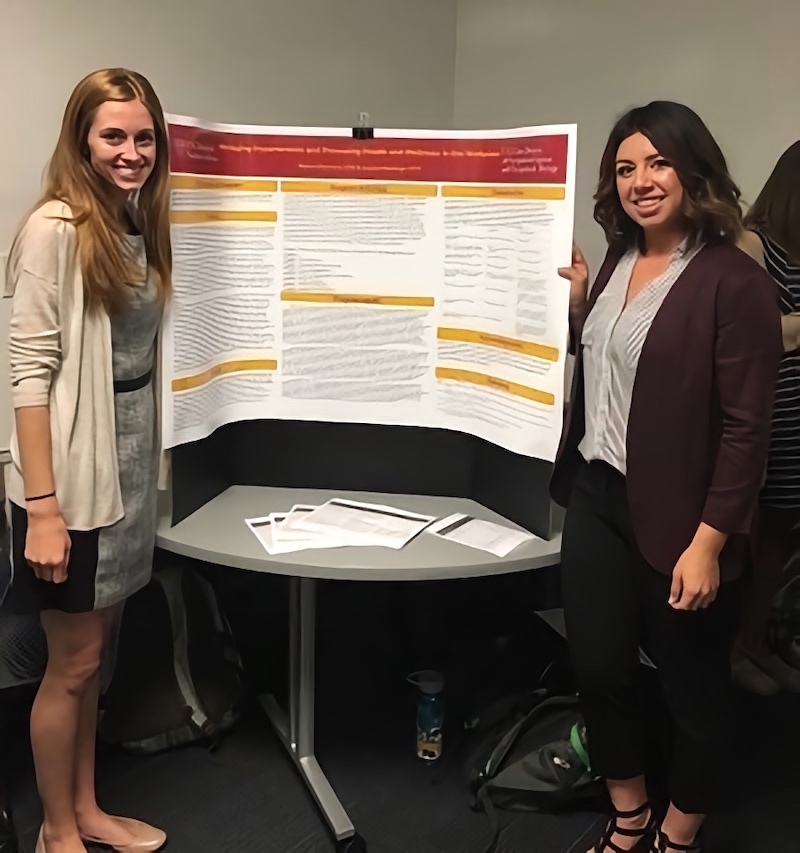
Our Poster!
In addition, if you would like to learn more about the other courses offered within in the entry-level Master’s program, I highly encourage you to do so. 😊
⋯

The Trojan Family ⟩
December 2, 2016, by Erwin
A lot of times, prospective students ask me what it’s like to be in such a large class. Comparatively, USC has one of the largest programs in the country. Does everyone just go home after school? Will I really make lasting friendships here? Will I really be friends with everyone?
To that I say, we are all one big, happy Trojan family.
With Thanksgiving in the books and the holiday season fast approaching, I wanted to share a glimpse of what being part of the Trojan family looks like.
This week, our entire class came together to throw a huge OT holiday potluck. Large gatherings like this are not out of the ordinary. We all love to be in each other’s company and while Thanksgiving just past, I can honestly say for this year, I am thankful for all the friendships I’ve made with my peers and professors.
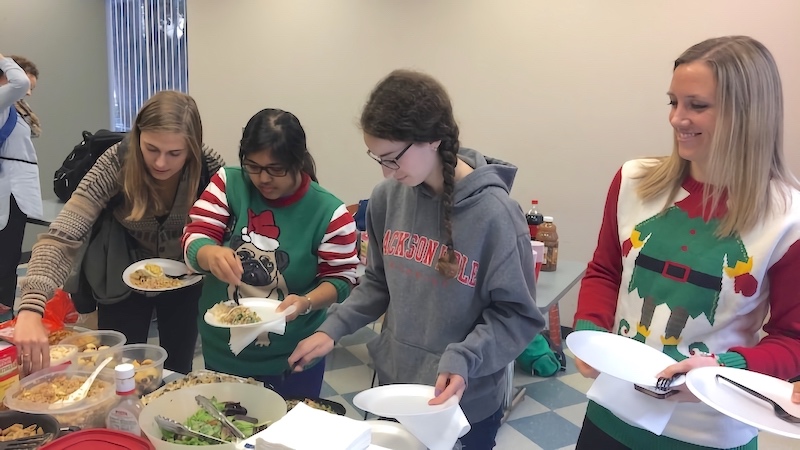
USC OT students getting their grub on!
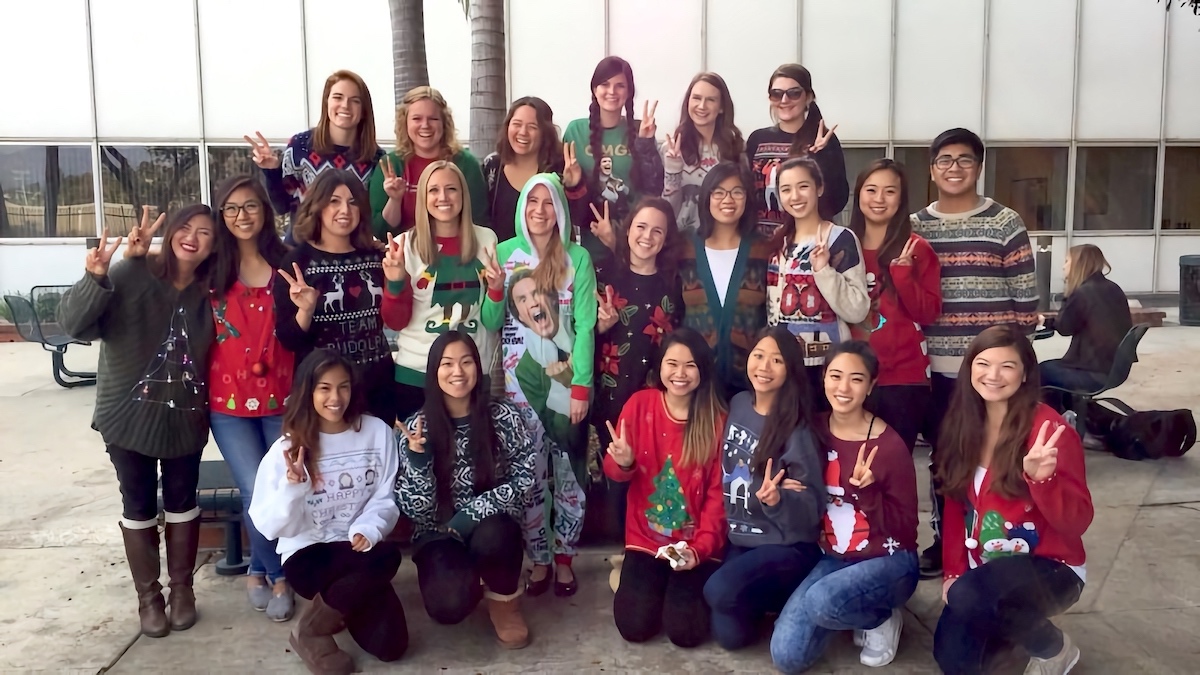
Yay for ugly holiday sweaters!!!
⋯





